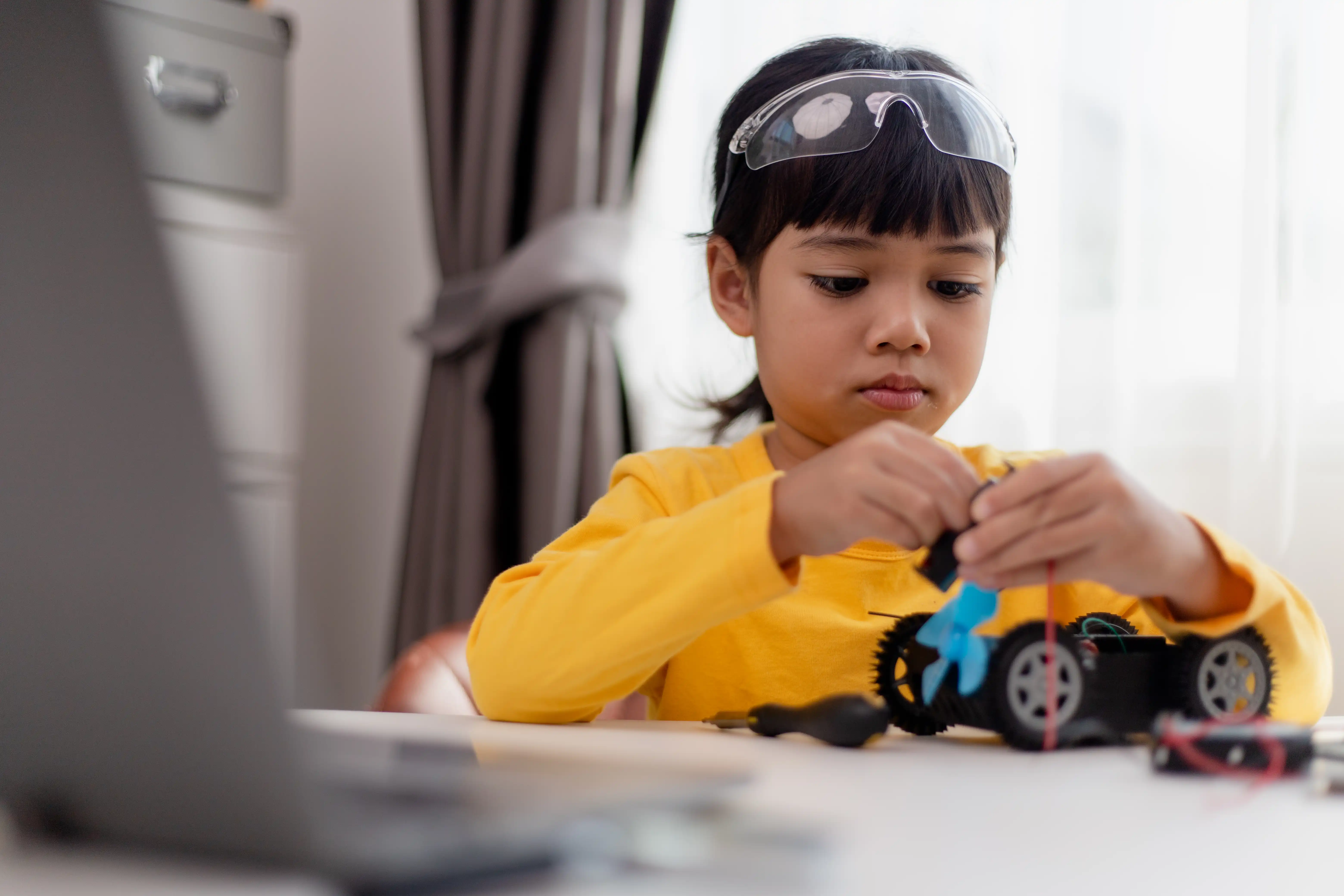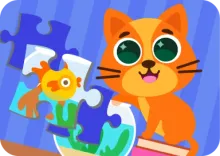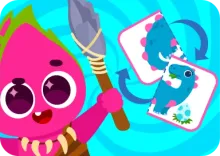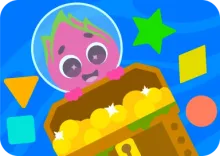Children's Coding Games: Building Logic and Creativity for the Future
Coding games introduce kids to logic and problem-solving through play. These activities help children practice sequencing, patterns, and basic computational thinking without needing complex tools or long lessons.
Table of contents

Coding games for kids to learn logic and sequencing
In today’s tech-driven world, understanding the basics of programming is no longer just a trendy topic – it’s a vital skill. But how can you introduce coding to a child in a way that’s fun, not boring? These games are designed for any kid interested in learning programming, making the process engaging and accessible. How do you make even the youngest curious and eager to explore this topic? The answer is coding games for kids!
It’s important to clarify right away that this isn’t about writing complex lines of code. It’s about learning through play. Even complicated concepts can be explained in a simple and accessible form, with a focus on logical thinking.
Why Coding Games Are More Than Just a Trend – They’re an Investment in the Future
In a time of rapid technological change, coding games for children are more than just entertainment; they’re an investment in your child’s future. These games teach not only coding skills but also fundamental computational thinking – a key asset in virtually every field. Many coding games are part of a structured curriculum designed to foster problem-solving and critical thinking skills.
The ability to analyze problems, find solutions, think algorithmically, and apply creativity will become a competitive advantage in a world driven by automation and innovation. It’s no secret that the most promising careers today lie in IT and related fields. And this isn’t a trend that will become oversaturated in 10, 20, or even 30 years – because technology has no ceiling.
By introducing children to coding games today, you’re giving them a powerful tool for adaptability, success, and self-realization in tomorrow’s ever-changing world. It’s a meaningful contribution to their digital literacy and career readiness.

Help your child
grow with Keiki
We’ll help you turn everyday screen time
into real learning progress.
The Importance of Kids Coding Games for Development
These games offer enormous benefits for a child’s holistic development, going far beyond simple exposure to technology. They lay the foundation for a wide range of skills. For example, computational thinking – which includes:
- Decomposition – breaking down a large task into smaller, manageable parts
- Pattern recognition – identifying repeating elements and trends
- Abstraction – focusing on what matters and ignoring irrelevant details
- Algorithmic thinking – building step-by-step instructions to solve a problem
When you aim to learn to code for kids, you’re also teaching your child how to solve problems. Every game is a puzzle. Kids must analyze the challenge, find possible solutions, test them, and if something doesn’t work, identify and fix the mistake.
And of course, there’s a well-established link: programming for kids = logical thinking. Games help them understand cause and effect: “If I do this, then that will happen.” This builds the ability to plan actions in a clear and meaningful sequence.
Coding isn’t just about following rules – it’s also about creating something new. Children learn to design their own worlds, stories, and even games, exercising their creative thinking. Many coding games include guided lessons that help children progress through increasingly complex concepts at their own pace. It also fosters patience, perseverance, and early self-analysis.
Another essential skill that comes from this kind of activity is attention. Many coding games require high levels of concentration and attention to detail and sequence.
Core Coding Concepts Every Child Can Grasp
Coding games for kids open the door to the world of computer science by making core coding concepts both accessible and enjoyable. Even at a young age, children can start learning the basics of programming through play, without any previous experience. These games introduce essential ideas like sequencing – putting instructions in the right order – so kids can see how each step leads to a specific outcome. This is the foundation of every programming language, and coding games make it intuitive and fun.
As children progress, they encounter loops, which let them repeat actions without having to write the same instruction over and over. Functions come next, teaching kids how to group actions together and use them whenever needed – just like calling a favorite move in a game. Variables and data help kids understand how to store and use information, while object-oriented programming introduces them to the idea of creating and controlling different characters or objects within their own games.
Coding games are designed to nurture problem solving skills, critical thinking, and computational thinking. Each coding challenge encourages kids to break down big problems into smaller tasks, experiment with solutions, and learn from their mistakes. This unique approach helps children develop a logical mindset and the confidence to tackle new challenges, both on the screen and in the real world.
For younger kids, platforms like Scratch Jr offer a great introduction to coding concepts through colorful, block-based coding. As they grow, children can move on to more advanced platforms like Scratch, where they can create their own games, animations, and interactive stories using drag-and-drop blocks. When they’re ready, kids can try text-based coding in languages like JavaScript or Python, bringing their ideas to life with actual code.
Learning to code at their own pace is key. Coding games and apps allow children to progress through all the levels, mastering each concept before moving on. With the support of educators, parents, and engaging platforms, kids can experiment, create, and share their own projects – building not just coding skills, but also creativity and collaboration.
Some popular coding games and platforms that help kids learn these core concepts include:
- Scratch: Developed by MIT, this free online platform introduces kids to programming through block-based coding, making it easy to create games and animations.
- CodeMonkey: A coding game that teaches real programming languages like CoffeeScript and Python through fun challenges and puzzles.
- Kodable: An app designed for younger kids, teaching programming concepts with engaging games and activities.
- Coding Games for Kids: An award-winning app that offers a variety of coding games and puzzles, helping children learn sequencing, loops, and more.
By introducing kids to these platforms, you’re giving them a great introduction to the world of technology. They’ll learn to code, create their own games, and develop essential skills that will serve them for years to come. Coding games make learning programming languages and concepts fun, interactive, and accessible – empowering every child to become a creator in our digital world.

Screen-Free Coding Games – Activities Without Screens or Keyboards
You might be surprised, but to introduce a child to the world of coding… you don’t need a computer or a phone! Yes, the very things that first come to mind when people talk about programming are absolutely unnecessary when we’re talking about little ones and early steps.
To begin learning the basics, there’s no need to turn on any gadgets. Many activities can help children grasp key concepts through physical interaction and play. By playing these screen-free coding games, children internalize programming concepts in a fun and memorable way.
For the Youngest (Ages 3–5): Coding Games for Preschoolers
In coding games for 3 year olds, the focus is on simple sequences, patterns, and cause-and-effect relationships. They lay the foundation for a wide range of skills. Even at this young age, children can take pride in projects they have created, fostering creativity and engagement. Here are some fun ideas we’ve collected for you:
Instruction Robot
One child plays the robot, and another plays the programmer. The programmer gives simple verbal commands (such as “step forward,” “turn right,” “stop”), and the robot must follow them exactly. This is a great introduction to algorithmic thinking.
Pattern Games
Create physical patterns with objects (for example: red block, blue block, red block...) and ask the child to continue them. You can also use movements: jump-clap-jump-clap. This teaches pattern recognition.
Sorting and Classification
Ask the child to sort toys by multiple criteria at once (for example: all red and large toys, or all blue and round ones). This builds logical thinking and understanding of conditional operators.
If/Then Scenarios
Make up simple rules for actions: “If you see red, clap your hands,” “If you see blue, jump.” Children perform actions based on conditions.
Build real skills through fun, educational games for your child
Try KeikiFor Early School-Age Children (Ages 5–6): Unplugged Coding Games for Kids
These games deepen understanding of algorithms, conditions, and task decomposition. In general, many coding games for 6 year olds are suitable for learning at more advanced stages as well. These unplugged activities are effective for students of different ages and learning levels, helping them actively engage with coding concepts in educational settings.
Human Maze
Build a simple “maze” using chairs, pillows, or ropes. One child (blindfolded or with eyes closed) is the “robot,” and another is the “programmer” who gives clear verbal commands to guide the robot through the maze: “take two steps forward,” “turn 90 degrees left.” This develops instruction accuracy and debugging.
Obstacle Course
If you want to introduce beginner coding for kids, this is a perfect task. Set up a small obstacle course in the yard or room. Then create a step-by-step “program” (algorithm) to complete it using cards with symbols or simple action drawings (jump, crawl, go around). Children must follow the algorithm.
Conditional Movements
Make If/Then Scenarios more complex: “If I raise my right hand, do three jumps. Otherwise (if I raise my left hand), do two claps.” You can add even more advanced conditions.
Sequence Cards
Draw cards that represent the steps of a simple activity (for example: “how to make a sandwich” – get bread, spread butter, add cheese, top with another slice of bread). Mix up the cards and ask the child to arrange them in the correct order, then perform the “program.” This teaches logical sequencing.
Related Games in Keiki App
Digital Coding Games – Virtual Worlds for Learning
Of course, we can’t ignore the elephant in the room – sooner or later, a child interested in coding will move on to using gadgets. When it comes to digital coding games, it’s important to choose trusted and safe educational platforms.
Keiki is an excellent tool for the youngest learners, introducing them to the world of coding through intuitive and playful games. It’s perfectly suited for developing early coding skills. These games don’t imitate complex coding environments but instead gently train the skills needed for coding through play. Among such games, you’ll find:
- Logic puzzles and sequencing games. Keiki offers many tasks where the child must complete a picture, arrange objects in the correct order, or solve a puzzle by following logical rules. This develops logical thinking and an understanding of algorithms.
- Pattern recognition or matching games. Games where children must identify repeating elements, continue a sequence, or find the “odd one out.”
- Mini problem-solving games. Simple puzzles where the goal is to figure out which sequence of actions will lead to the desired result – for example, guiding a character through a maze, collecting items in a basket, or harvesting fruit to make juice. The app contains many of these online coding games for kids.
- Interactive Tetris. This not only develops spatial thinking but also teaches abstract thinking, problem analysis, and step-by-step approaches.
A coding game that teaches real programming languages like CoffeeScript and Python through fun challenges and puzzles. These are examples of a coding language used to teach core concepts. CodeMonkey offers a variety of coding challenges that help children develop their programming skills step by step.
When they’re ready, kids can try text-based coding in languages like JavaScript or Python, bringing their ideas to life with actual code. These experiences help children start thinking like a developer and understand the tools used by professional developers.
For early childhood coding activities, it’s also important that Keiki offers a safe environment free of ads and unwanted links.
How to Integrate Coding Games into Daily Life
Integrating coding games into your child’s routine is easier than it seems. There’s no need to turn it into a formal lesson – young children don’t have the same clear motivation as adults. Instead, they’re looking for fun and engaging activities. These tips can help:
- Start with screen-free games. They’re visual, require no preparation, and are perfect for introducing basic concepts without distractions.
- Make it a game, not a lesson. The focus should be on fun. Let the child feel it’s an exciting adventure, not an obligation.
- Encourage experimentation. Don’t fear mistakes. Let the child try different solutions and see what happens.
- Draw algorithms. Ask the child to draw a step-by-step sequence of actions needed to reach a goal (like how a robot moves toward a toy). Visualizing helps reinforce understanding.
- Use everyday situations. “Let’s create an algorithm for cleaning your room!” or “What steps do we take to make breakfast?” This shows that algorithms are everywhere.
- Play together. Learning side by side strengthens your bond and lets you model thinking and problem-solving strategies.
Modern free coding games for kids make it easy – and anything but boring – to master many valuable skills for the future. Teachers can also integrate coding games into their classroom routines to make learning programming concepts more engaging for students.













